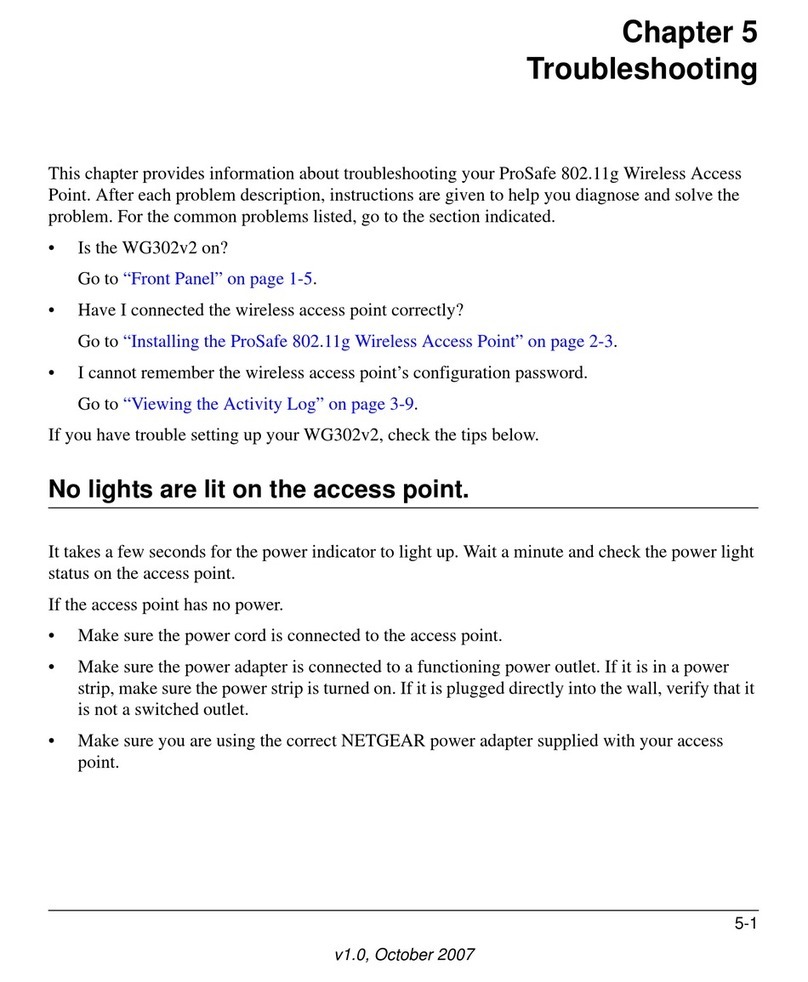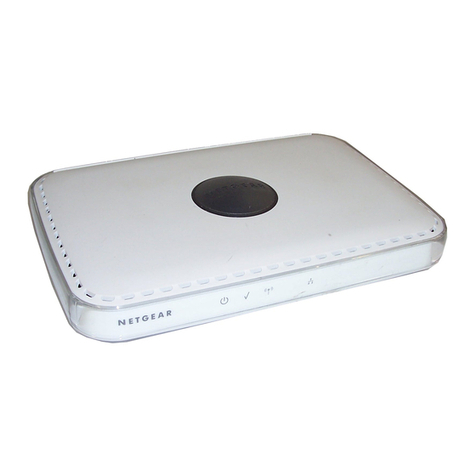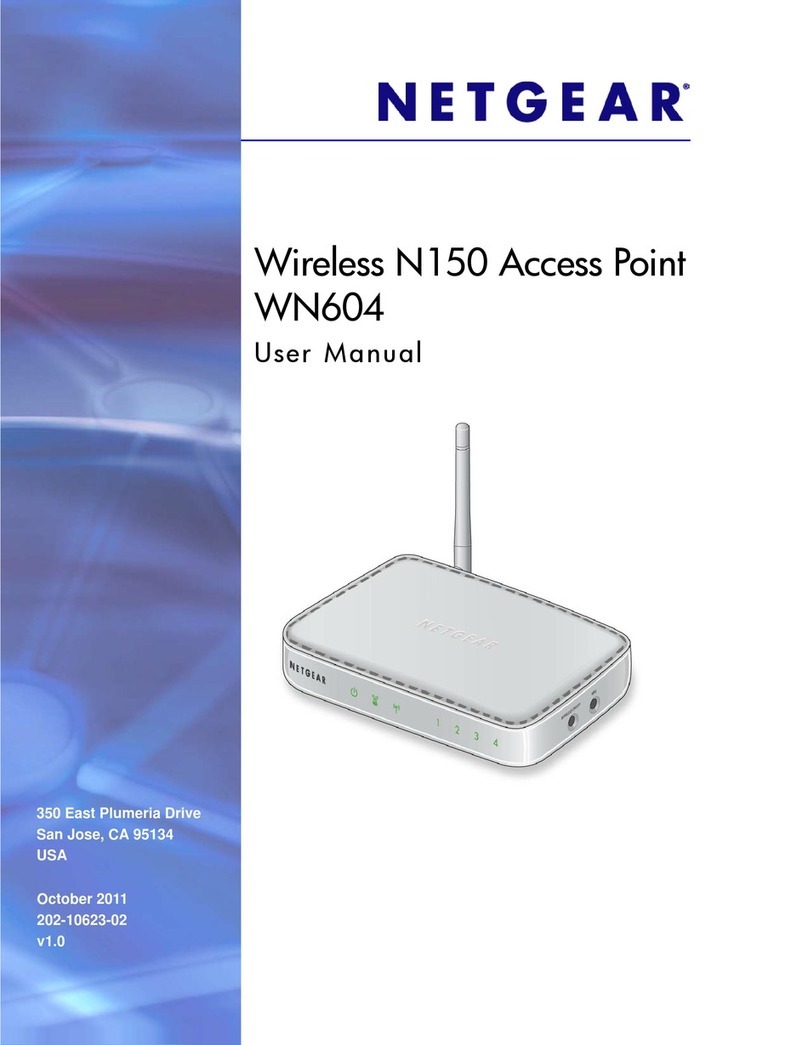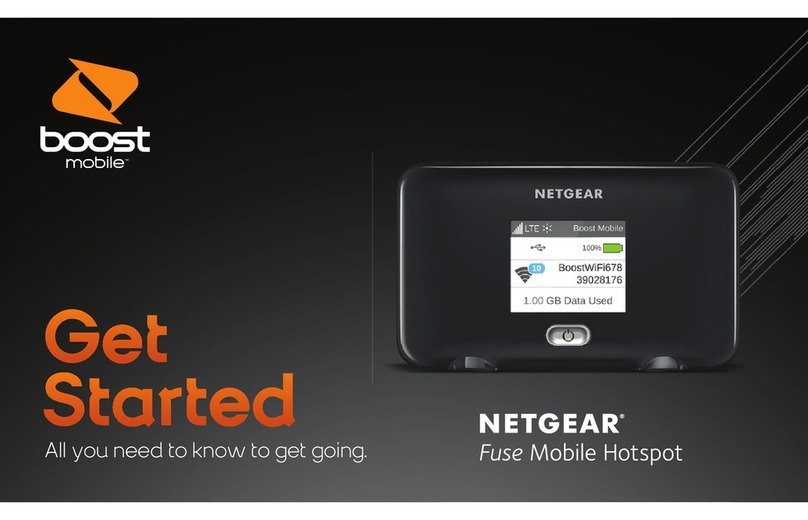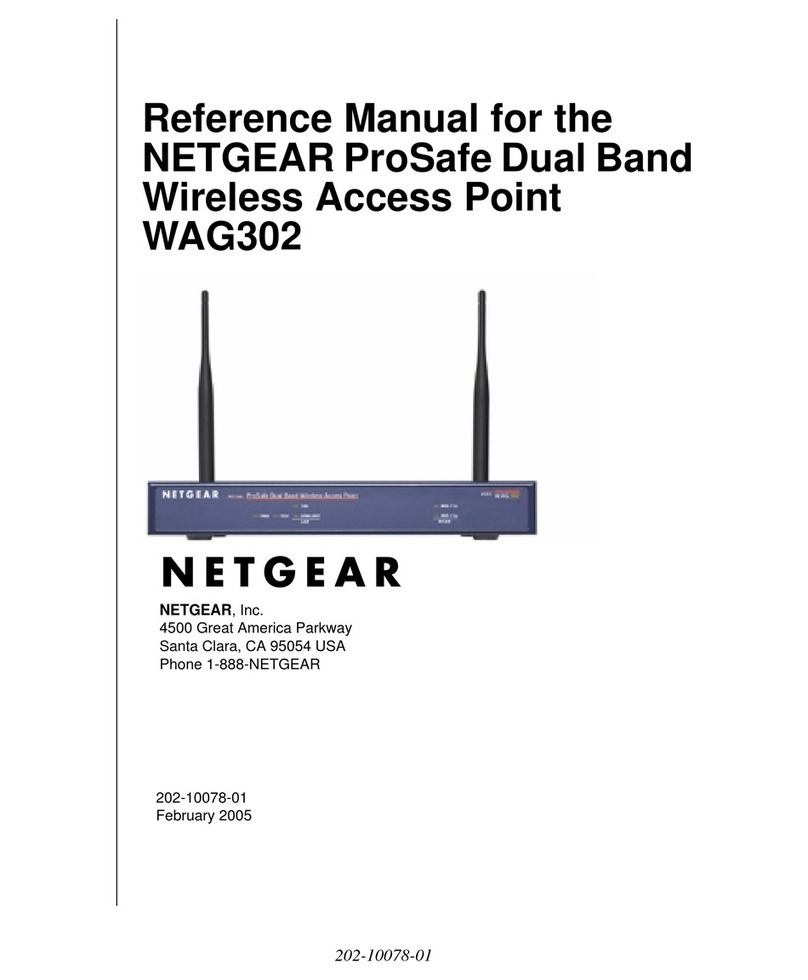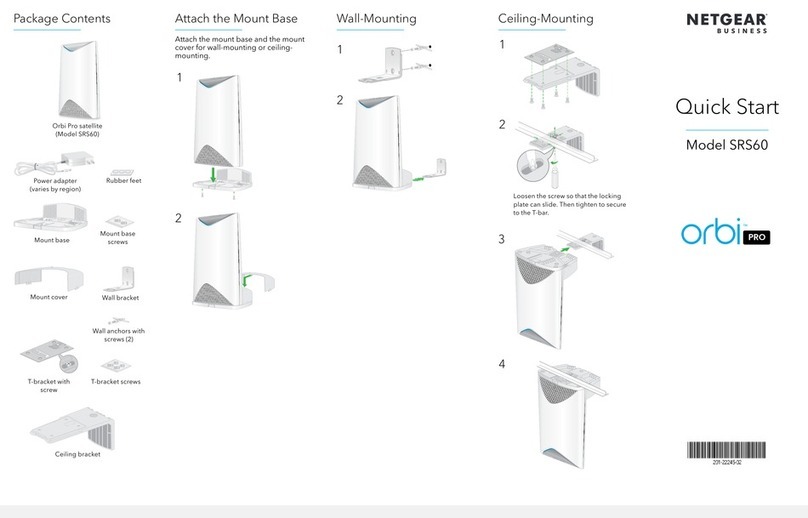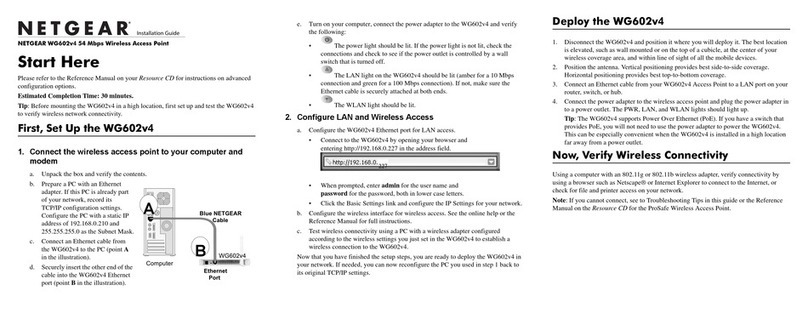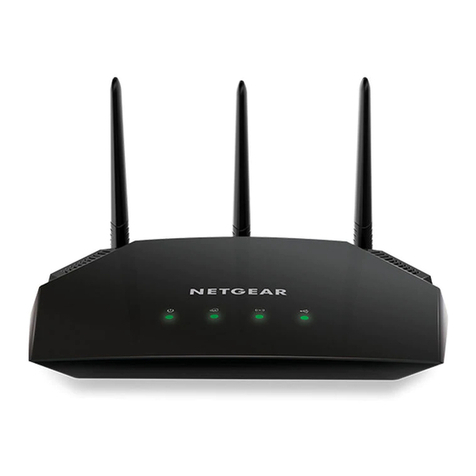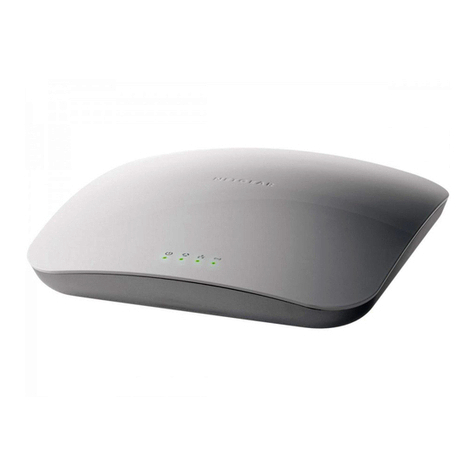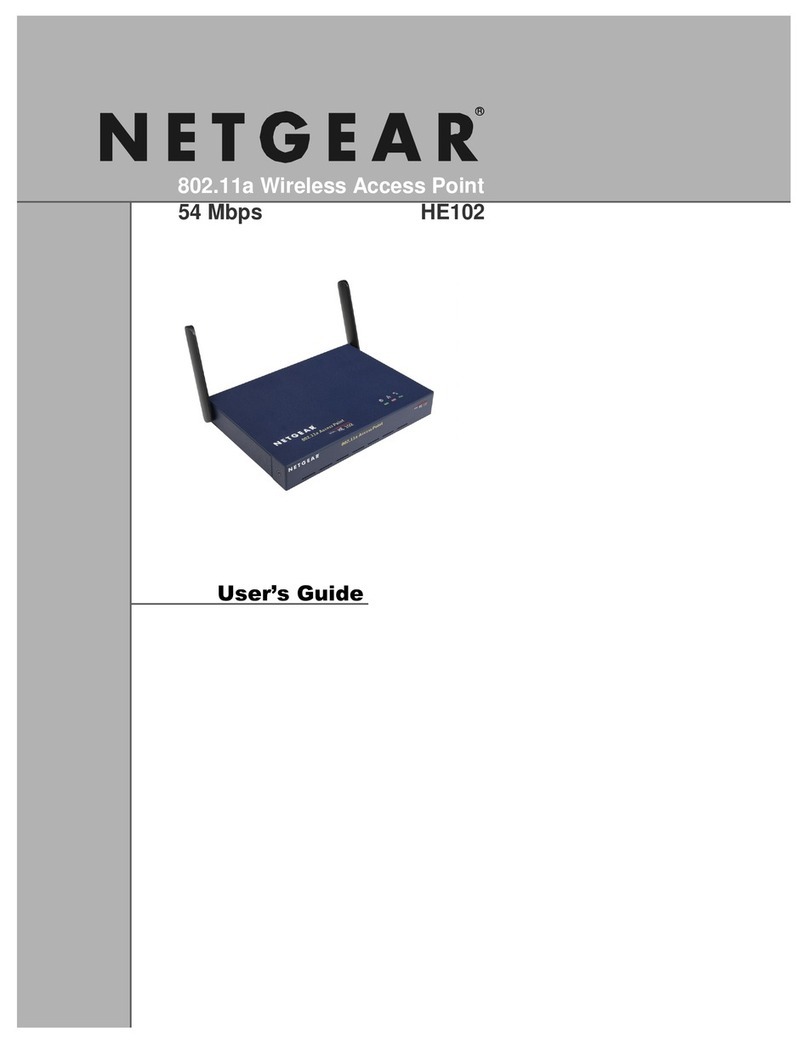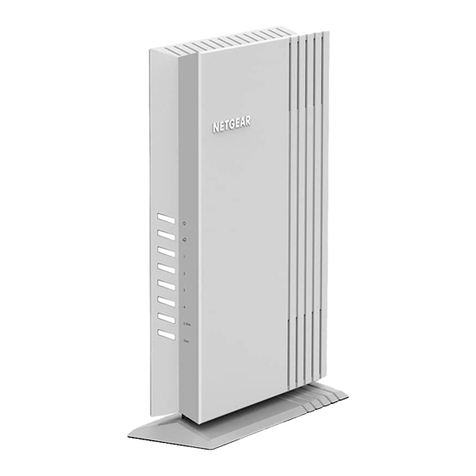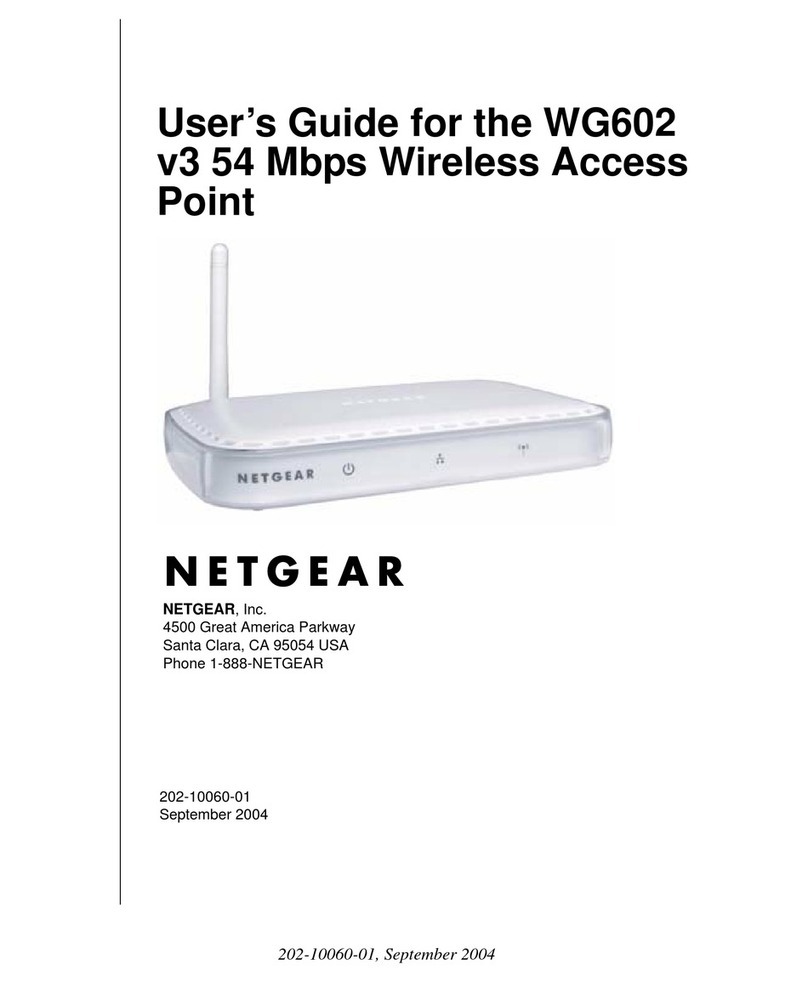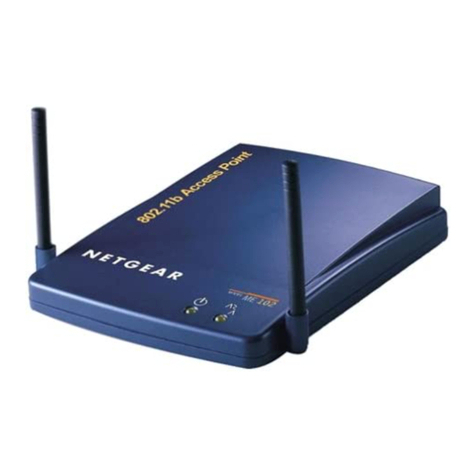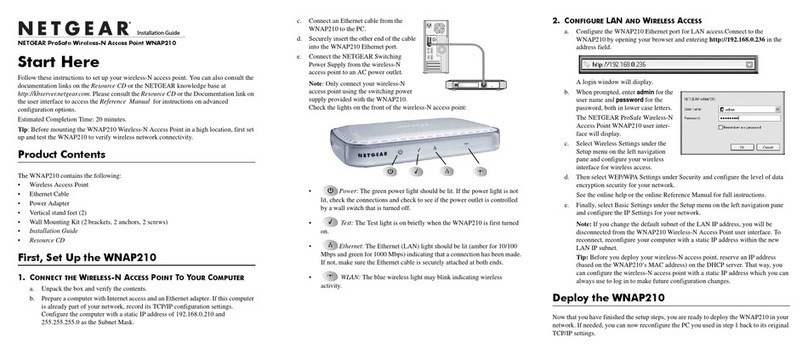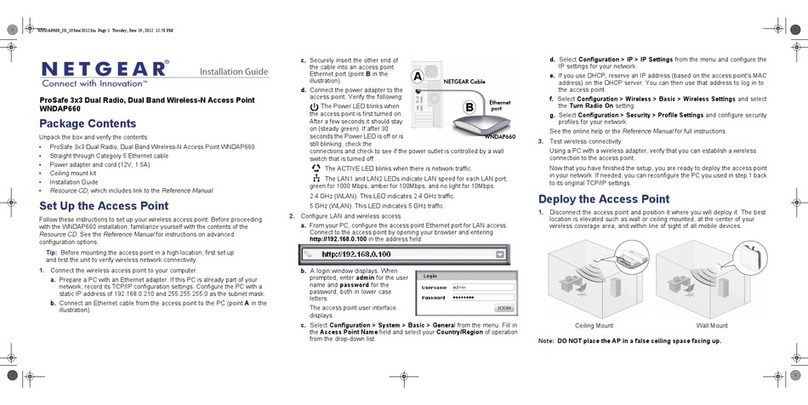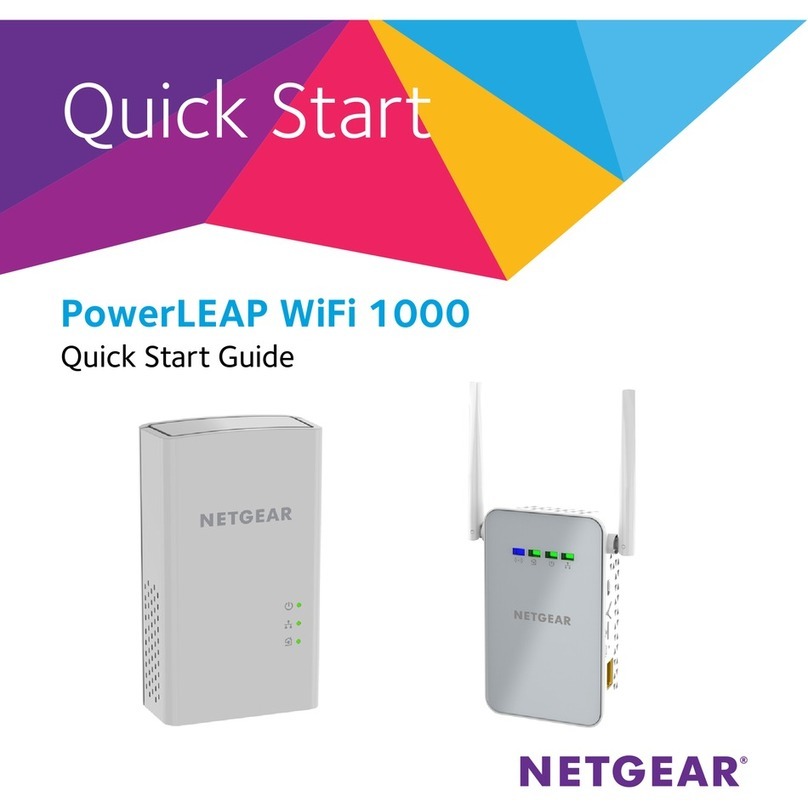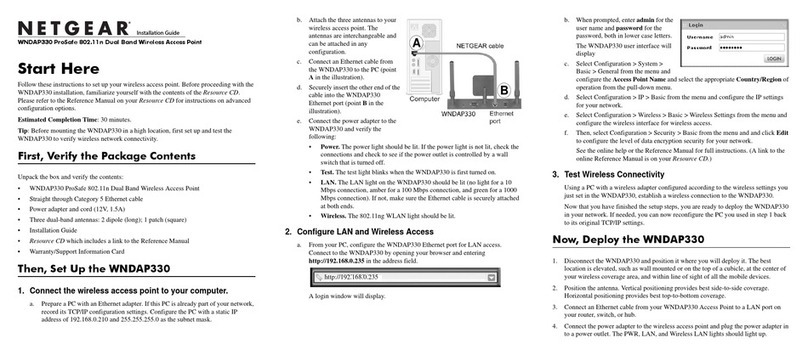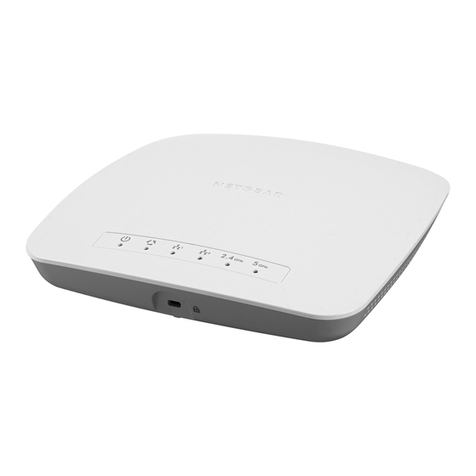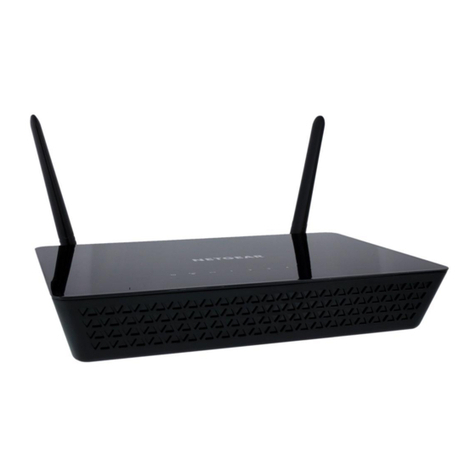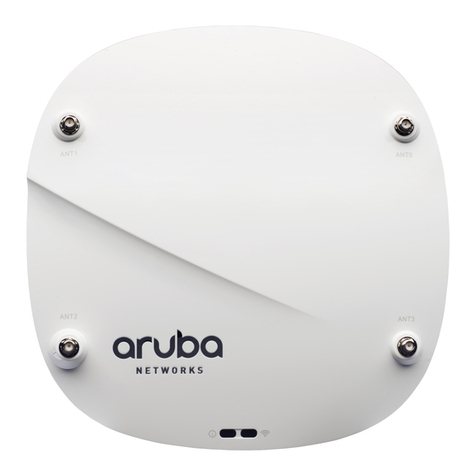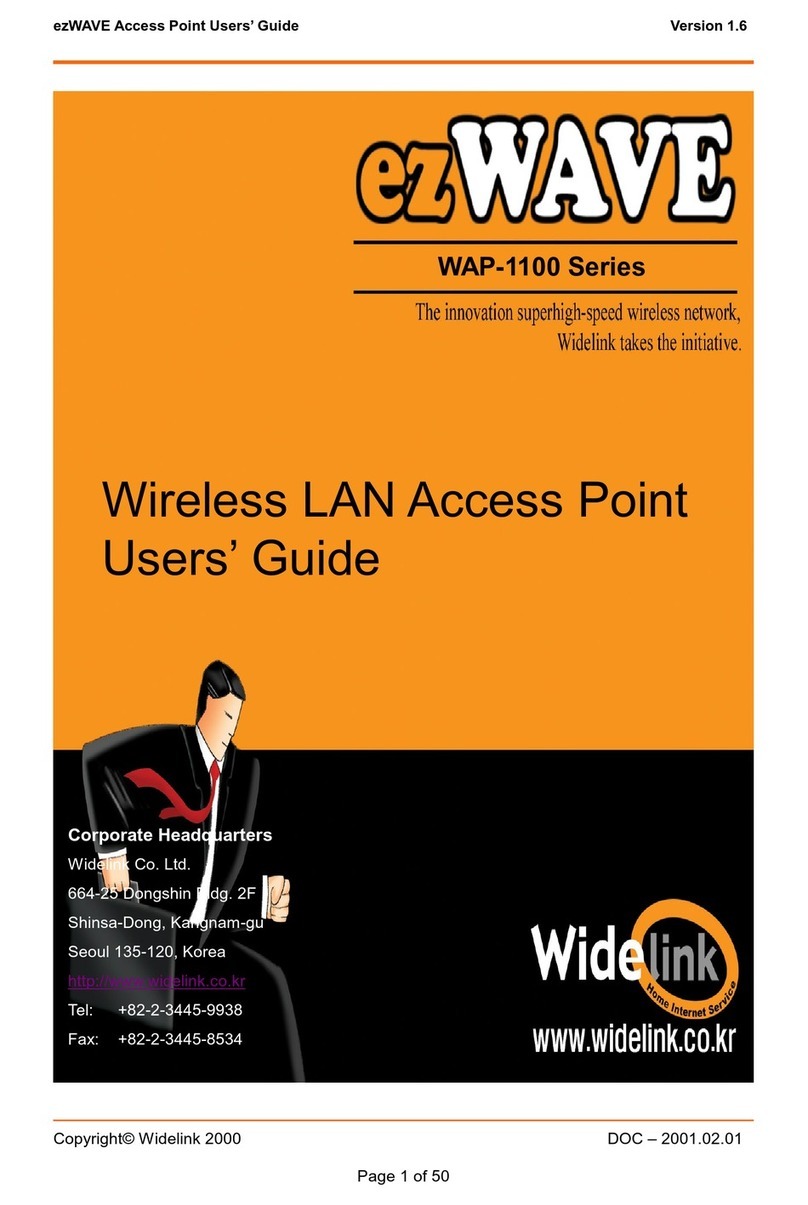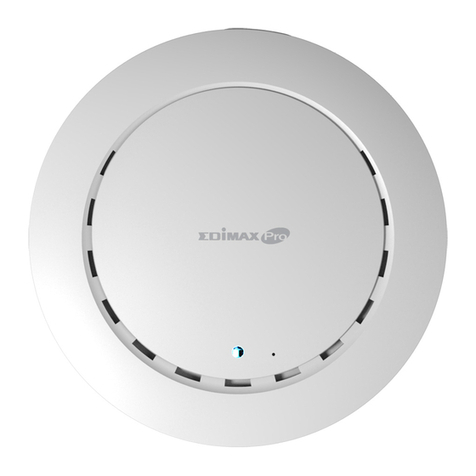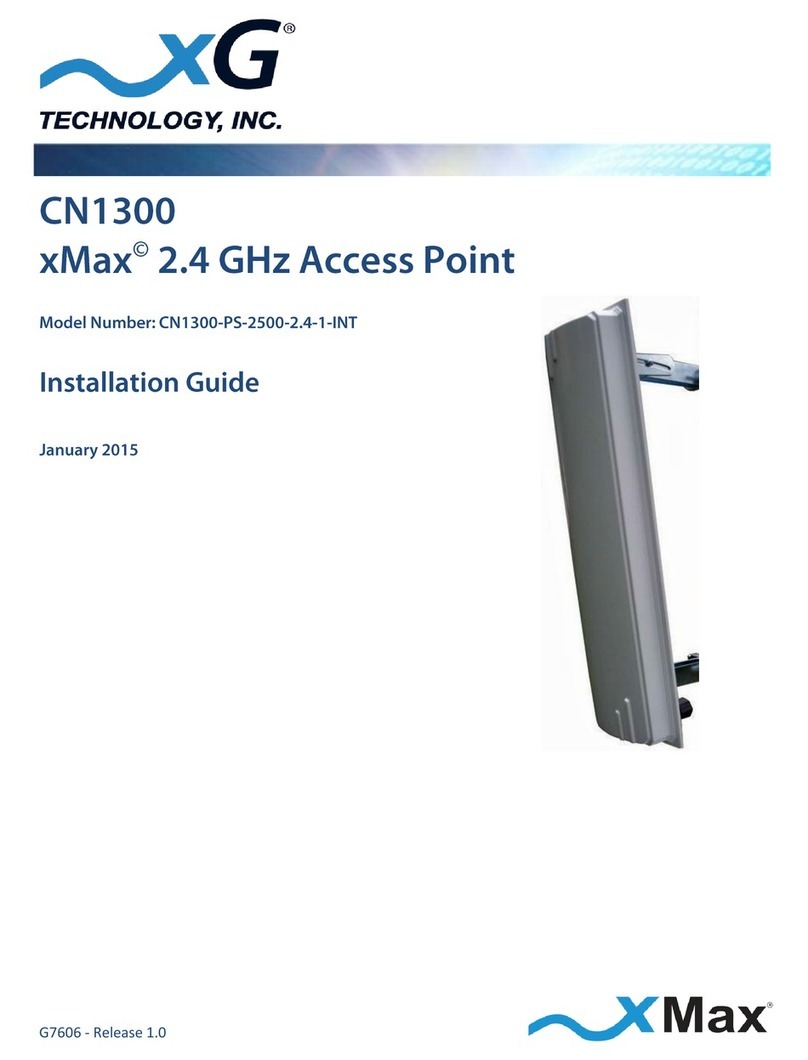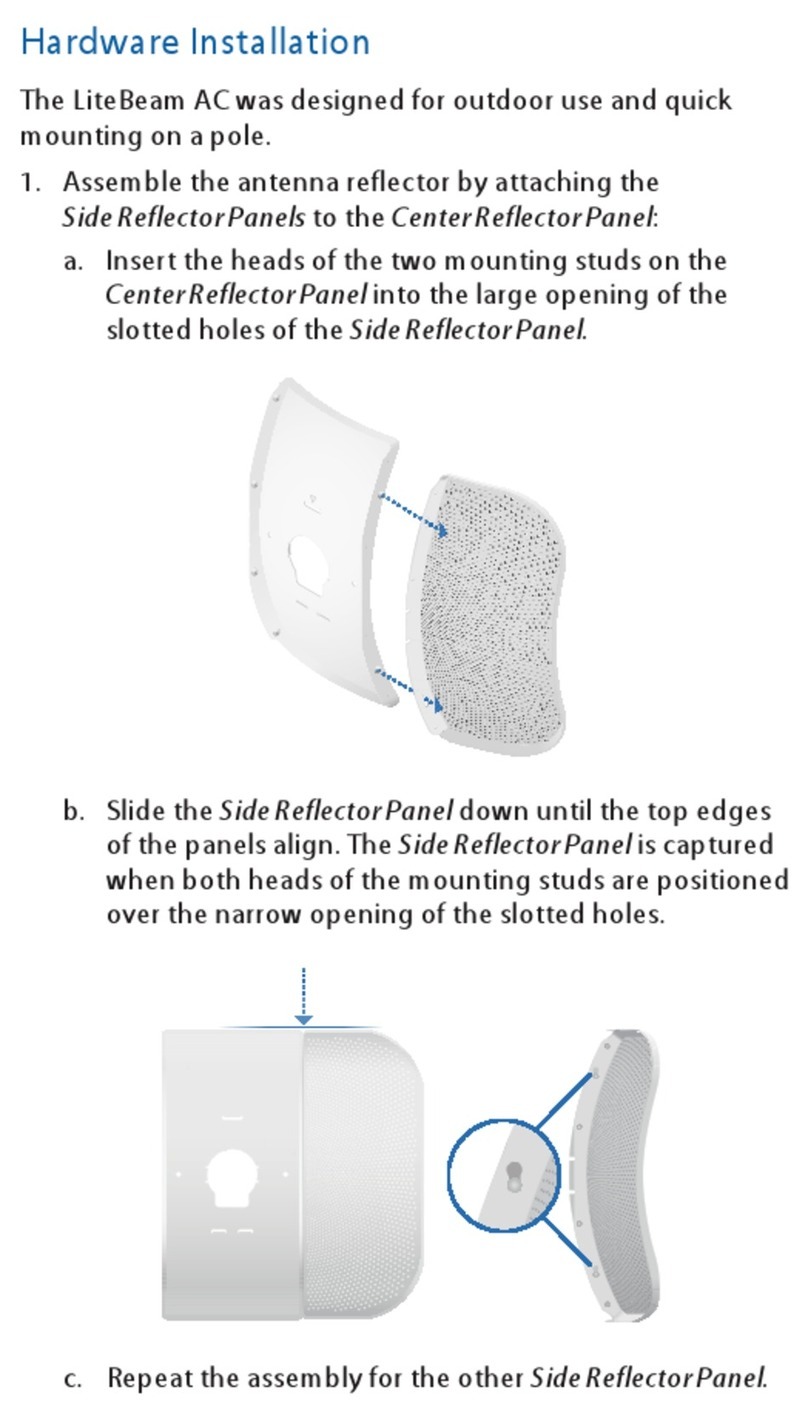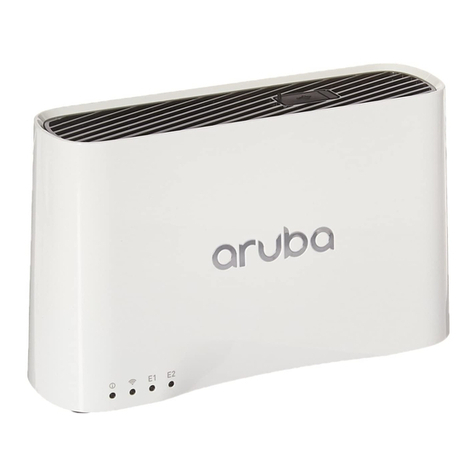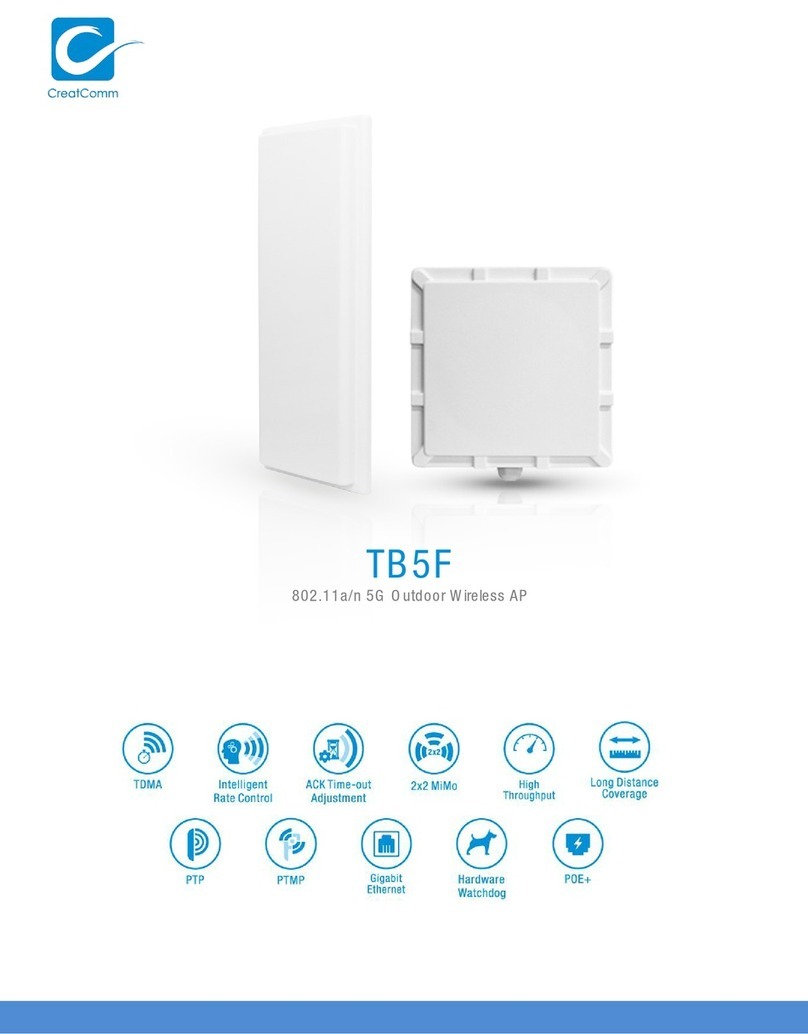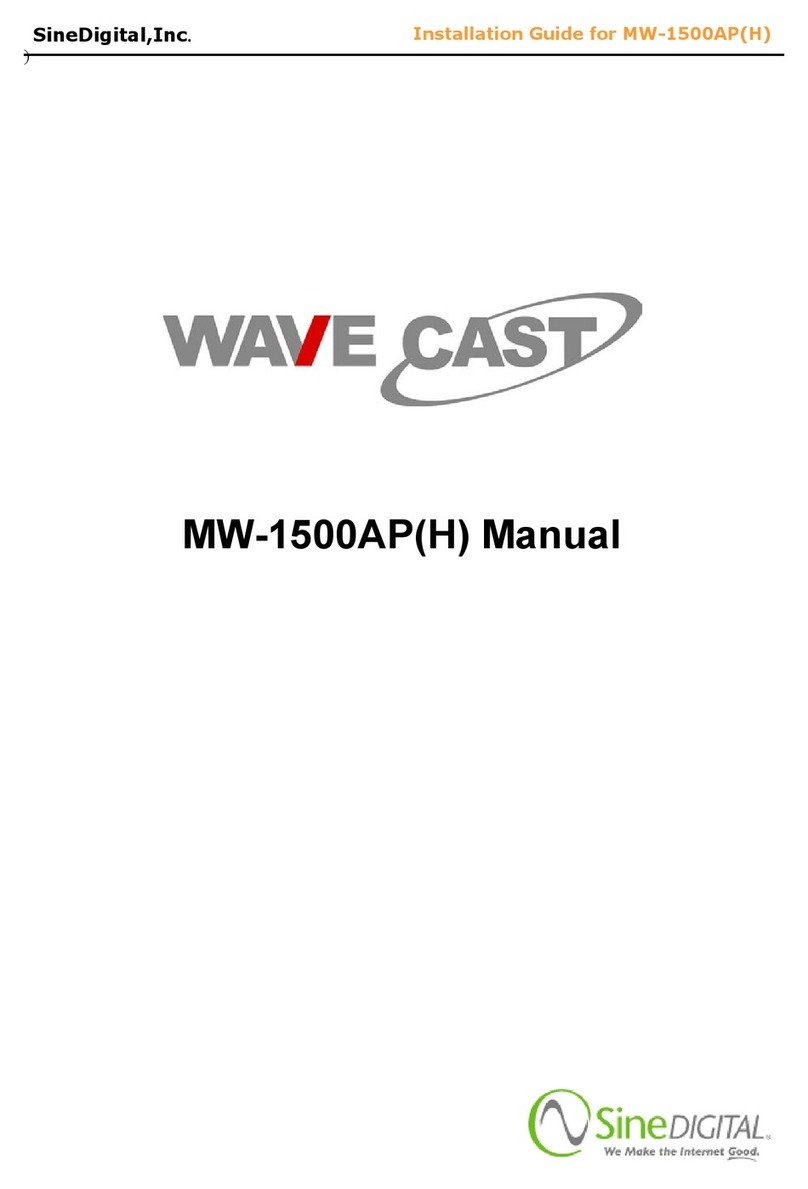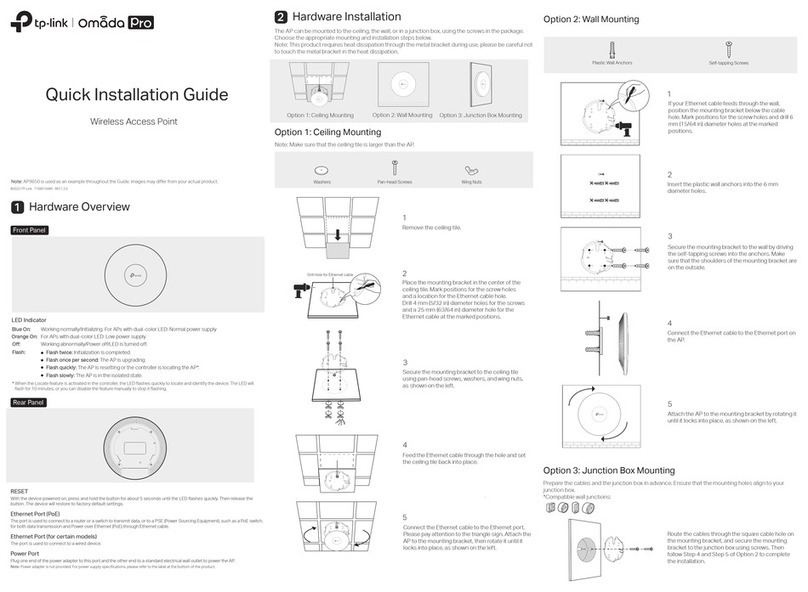
Chapter 1. Introduction |11
ProSafe Wireless-N Access Point WNAP320 Reference Manual
Key Features
The WNAP320 Access Point provides solid functionality, including the following features:
• Multiple operating modes:
-Wireless Access Point. Operates as a standard 802.11b/g/n access point.
-Point-to-Point Bridge. In this mode, the access point communicates only with another
bridge-mode wireless station or access point. Network authentication should be used
to protect this communication.
-Point-to-Multi-Point Bridge. Select this only if this access point is the “master” for a
group of bridge-mode wireless stations. The other bridge-mode wireless stations
send all traffic to this master, and do not communicate directly with each other.
Network authentication should be used to protect this traffic.
-Wireless Repeater. In this mode, the access point does not function as an access
point. It communicates only with Repeater mode, Point-to-Point Bridge mode, and
Point-to-Multi-point-bridge-mode wireless stations. Network authentication should be
used to protect this communication.
• Hotspot settings. You can allow all HTTP (TCP, port 80) requests to be captured and
redirected to the URL you specify.
• Upgradeable firmware. Firmware is stored in a flash memory, you can upgrade it easily,
using only your Web browser, and you can upgrade it remotely. You can also use the
command-line interface.
• Rogue AP detection.The Rogue AP filtering feature ensures that unknown APs are not
given access to any part of the LAN.
• Access Control.The Access Control MAC address filtering feature can ensure that only
trusted wireless stations can use the access point to gain access to your LAN.
• Security profiles.When using multiple BSSIDs, you can configure unique security
settings (encryption, SSID, and so on) for each BSSID.
• Hidden mode. The SSID is not broadcast, assuring only clients configured with the
correct SSID can connect.
• Configuration backup. Configuration settings can be backed up to a file and restored.
• Secure and economical operation. Adjustable power output allows more secure or
economical operation.
• Power over Ethernet. Power can be supplied to the access point over the Ethernet port
from any 802.3af-compliant mid-span or end-span source.
• Autosensing Ethernet connection with Auto Uplink™ interface. Connects to
10/100/1000 Mbps IEEE 802.3 Ethernet networks.
• LED indicators. Power, Test, LAN speed, LAN activity, and wireless activity for each
radio mode are easily identified.
• Wireless Multimedia (WMM) support. WMM is a subset of the 802.11e standard. WMM
allows wireless traffic to have a range of priorities, depending on the kind of data.
Time-dependent information, like video or audio, has a higher priority than normal traffic.
For WMM to function correctly, wireless clients must also support WMM.
